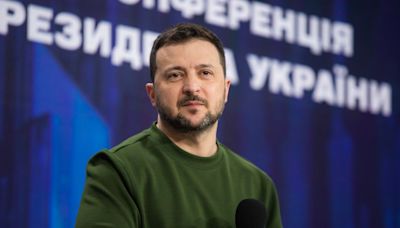Search results
Poland, officially the Republic of Poland, is a country in Central Europe. It is divided into 16 administrative voivodeship provinces, covering an area of 312,696 km 2 (120,733 sq mi). Poland has a population of over 38 million and is the fifth-most populous member state of the European Union.
- Flag
The national flag of Poland (Polish: flaga Polski) consists...
- History of Poland
The history of Poland spans over a thousand years, from...
- Kingdom of Poland
The West Slavic tribe of Polans who lived in what is today...
- Senate
The Senate (Polish: Senat) is the upper house of the Polish...
- Demographics of Poland
The demographics of Poland constitute all demographic...
- Poland Is Not Yet Lost
Back in Poland, however, especially in the parts under...
- Foreign Relations of Poland
The Republic of Poland is a Central European country and...
- Economy of Poland
The economy of Poland is an industrialised, mixed economy...
- Partitions of Poland
The Partitions of Poland were three partitions of the...
- Flag
- History
- Geography
- Literature
- People
- Famous People
- Related Pages
- Other Websites
Early history
The first sign of humans in Polish lands was 500,000 years ago. The Bronze Age started around 2400-2300 BC. The Iron Age started around 750-700 BC. At that time the Polish lands were under the influence of the Lusatian culture. About 400 BC Celtic and Germanic tribes lived there. Those people had trade contacts with the Roman Empire. Over time, Slavs came to Polish lands. Some of those Slavs, now commonly referred to as Western Slavs (though in reality a diverse group of tribes with shared et...
Piast and Jagiellon dynasties
Poland began to form a country around the middle of the 10th century in the Piast dynasty. In 966, Prince Mieszko I became a Christian, and so the Polish people also became Christians. The next king was Bolesław I of Poland (called Bolesław the Brave). He conquered many lands and he became the first King of Poland. Casimir I of Poland changed the Polish capital from Gniezno to Kraków. In the 12th century, Poland broke into some smaller states after the death of King Bolesław III Wrymouth in 1...
Polish-Lithuanian Commonwealth to Second Republic of Poland
In the 17th century Sweden attacked almost all of Poland (this was called “the Deluge”). Many wars against the Ottoman Empire, Russia, Cossacks, Transylvania and Brandenburg-Prussia ended in 1699. For the next 80 years, the government and the nation were weak, making Poland dependent on Russia. Russian tsars took advantage of this by offering money to dishonest members of the Polish government, who would block new ideas and solutions. Russia, Prussia, and Austria broke Poland into three piece...
Poland's territory is a plain reaching from the Baltic Sea in the north to the Carpathian Mountainsin the south. Within that plain, the land varies from east to west. The Polish Baltic coast is mostly smooth but has natural harbors in the Gdańsk-Gdynia region and Szczecin in the far northwest. This coast has several spits, dunes, and coastal lakes....
Almost no Polish literature remains before Christianisation in the 10th century. Polish literature was written in the Latin language during the Middle Ages. The Polish language was accepted as equal to Latin after the Renaissancefor literature. Jan Kochanowski was a leading poet of European Renaissance literature in the 16th century. Other great Po...
In the past, Poland was inhabited by people from different nations and of different religions (mainly Catholics, Orthodox and Judaism). This changed after 1939, because of the Nazi Holocaust which killed many Polish Jews. After World War II, the country was changed into a communist country, by the Warsaw Pact which included most central European co...
Nicolaus Copernicus, an astronomer who showed that the Earth moves around the Sun.Maria Skłodowska-Curie discovered radium and polonium.Poland.gov.pl - Polish national portal Archived 2008-10-29 at the Wayback MachinePoland at the World Factbook Archived 2019-08-18 at the Wayback MachinePoland is the fifth-most populous country of the European Union and the ninth-largest country in Europe by area. The territory of Poland covers approximately 312,696 km 2 (120,733 sq mi), of which 98.52% is land and 1.48% is water. The Polish coastline was estimated at 770 km (478 mi) in length.
- Ranked 69th
- Raczki Elbląskie, −1.8 meters (−6 ft)
- Rysy, 2,499 meters (8,199 ft)
- North European Plain
History of Poland. The History of Poland is the history of rather different territories during the past millennium. At one time, in the 16th century, the Polish-Lithuanian Commonwealth was the second largest state in Europe, after Russia. At other times there was no separate Polish state at all.
Timeline of Polish history. Poland portal. History portal. v. t. e. The history of Poland from 1945 to 1989 spans the period of Marxist–Leninist regime in Poland after the end of World War II. These years, while featuring general industrialization, urbanization and many improvements in the standard of living, [a1] were marred by early ...
People also ask
What is the history of Poland?
What is the culture of Poland?
What country is Poland bordered by?
What is the population of Poland?




